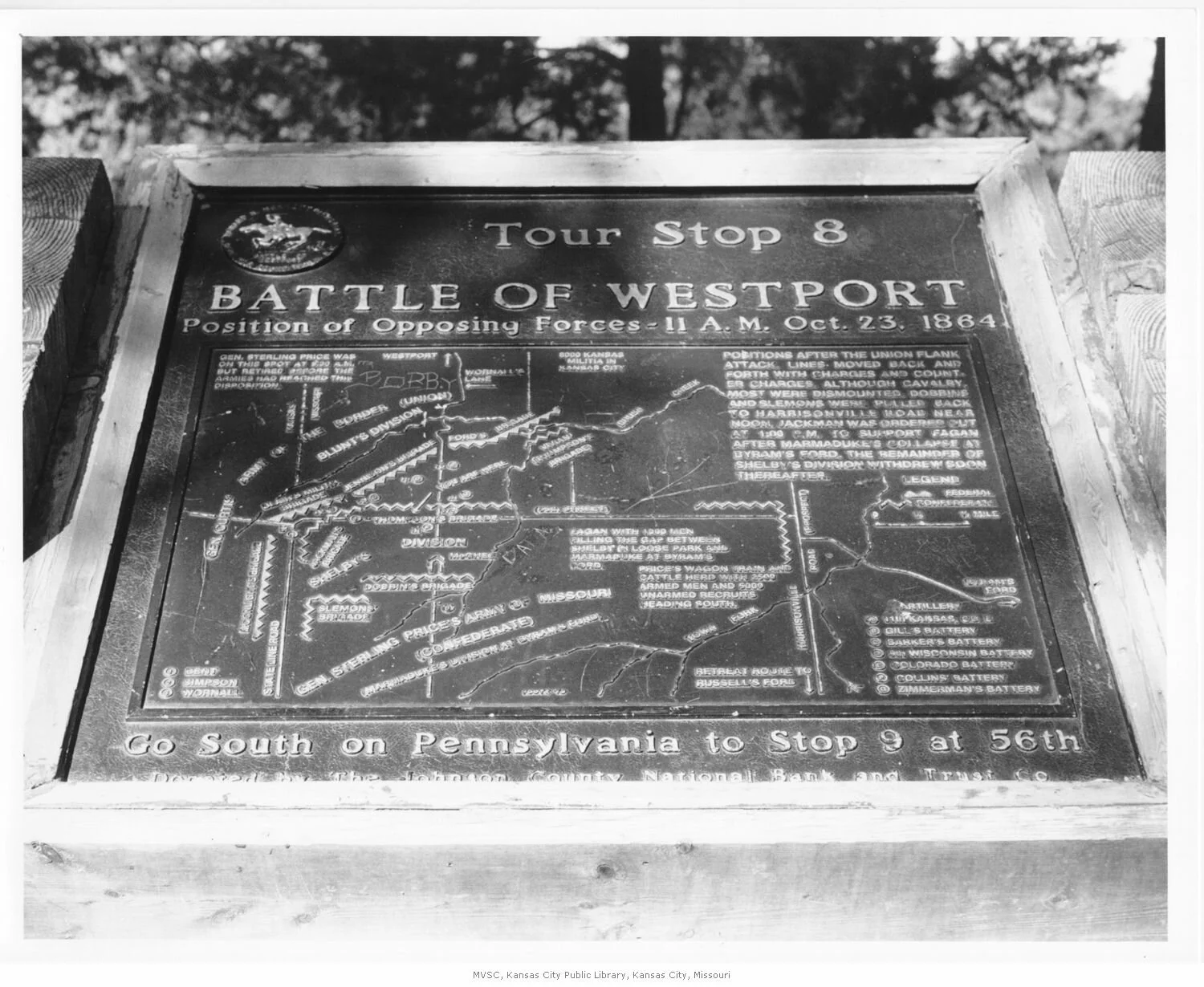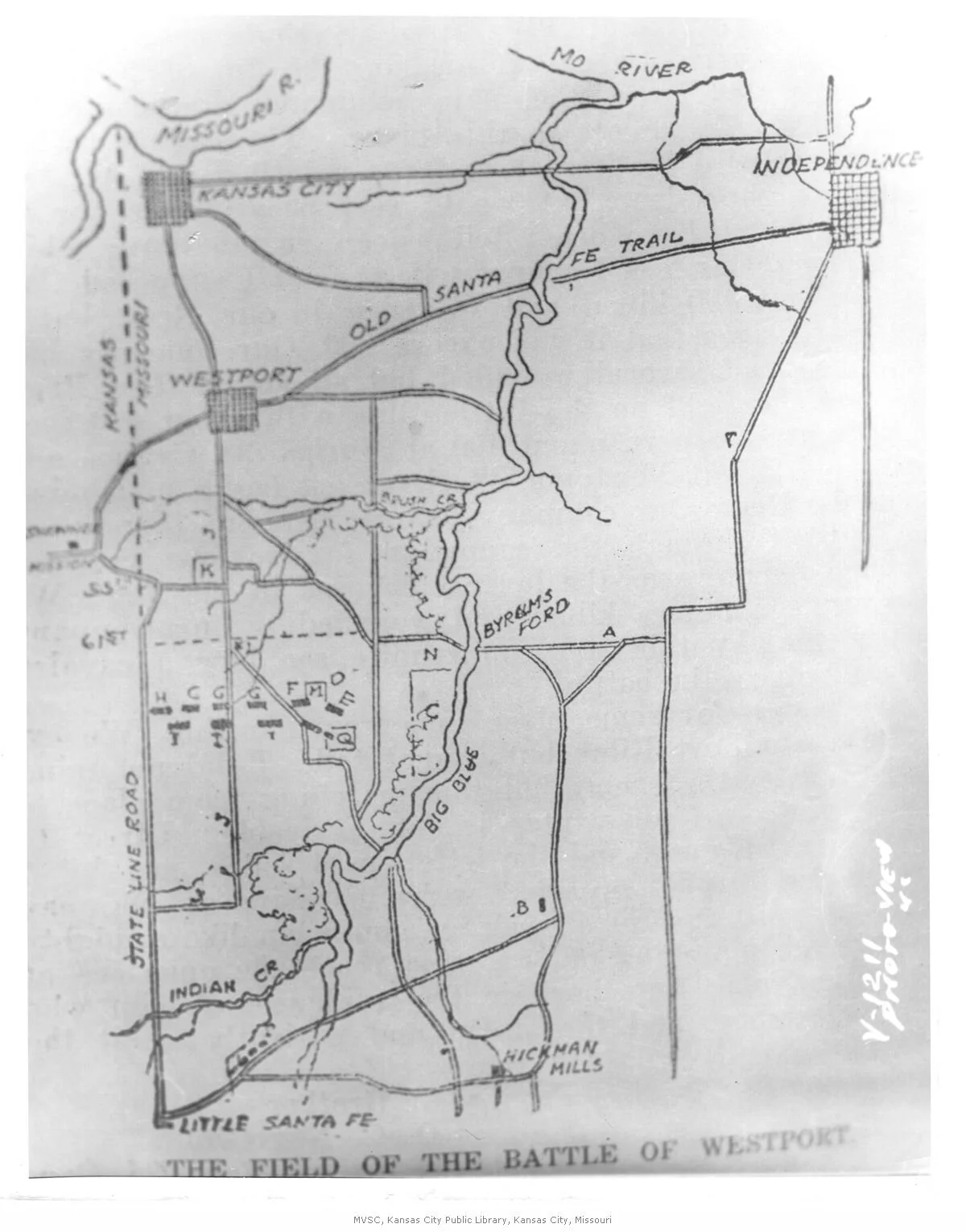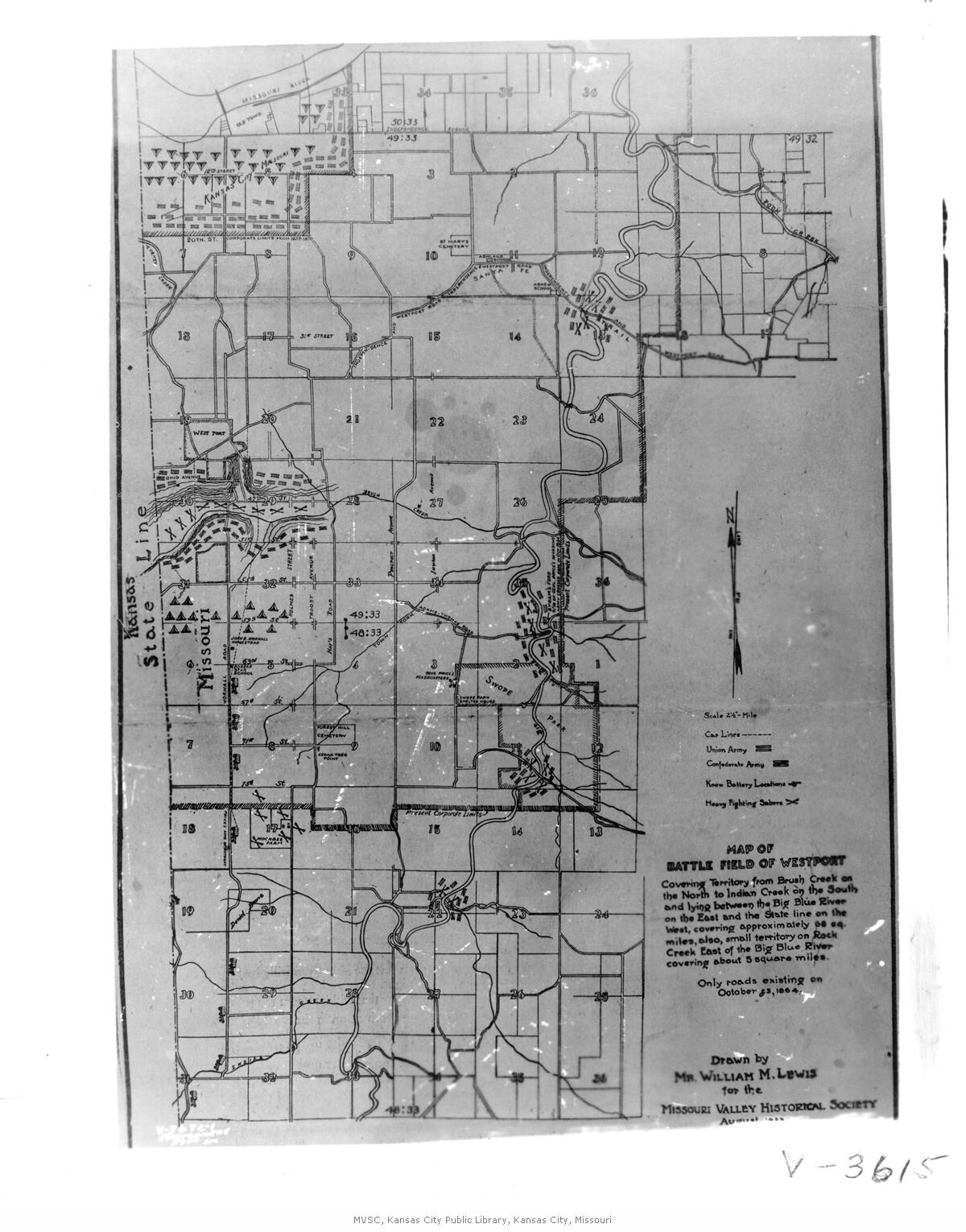
battle of westport
Battle of Westport
The Battle of Westport is considered to have been the “Gettysburg of the West.” It was the largest battle west of the Mississippi River and a decisive battle of the Civil War. It was the last battle along the volatile Kansas and Missouri border. Most Kansas citizens now know the location in Kansas City, Missouri, where this battle took place as Swope Park. When visiting the site, it is tough to imagine that approximately 1500 men died, were hurt, or ended up missing over a three-day time span on October 21-23, 1864.
The battle had many elements and players. One group of players not frequently mentioned or spoken of in headlines about the war or dedicated to in memorials is the African American soldiers that enrolled or volunteered in state militias. They entered the war after the passing of the Militias Act that allowed African Americans to help defend their land and their freedoms. They ultimately played a major role in the Battle of Westport because the Union fighting force was depleted due to regional fighting elsewhere. About one thousand black Kansas militiamen and soldiers fought during the raid of Confederate Major General Sterling Price.
The courage of the Black soldiers solidifies the role these brave men played in the war. Their willingness to die for the Union reflects the fact that they not only wanted to save the Union, but they were struggling to free their people. They continually had to plow through and deal with the continuing discrimination that inundated the Black troops. Roger D. Cunningham writes in his article, "Welcoming 'Pa' on the Kaw: Kansas's 'Colored' Militia and the 1864 Price Raid,” that “It is important to recall the actions of these proud black Kansans—most of them newly freed slaves—who were willing to fight for their freedom, thereby proving to one and all that they were more than worthy of the civil rights that had been unjustly withheld from them.” It is also important to remember that Black women, even though they couldn’t join the military, served as spies, nurses, and scouts.
Two of the many Black men who gave their lives would later be identified as Moses Banks and Ben Hughes of the Second Militia Regiment. Although the Blacks who died are not often memorialized, there is a monument paying tribute to these men in Topeka, Kansas.
The Confederates had hoped to ascertain their government’s authority, but the Battle of Westport found the Rebels withdrawing. The Battle of Westport was a sequence of conflicts that was successful for the Union with immeasurable help from the Blacks and in turn gave the Missouri slaves their emancipation.
Works Cited
Kshs.org. (2002). Welcoming "Pa" on the Kaw: Kansas's "Colored" Militia and the 1864 Price Raid. [online] Available at: https://www.kshs.org/publicat/history/2002summer_cunningham.pdf.
Content Provided by
Jamie Boyda, student at the University of Missouri Kansas City as part of Dr. Sandra Enriquez’s Urban History Class.






